Shahu and the Shankaracharya
- By Katharine
- 17 March, 2014
- 8 Comments
My two full days in Kolhapur proved fascinating, as I met historians, university faculty and students. Girish first took me to visit the New Palace, which is part museum and part home to the current Chhatrapati of Kolhapur, a descendent of the royal family that once ruled much of Maharashtra. Before entering the museum dedicated to the rule of Chhatrapati Shahu Maharaj, we watched emus and deer in the small zoological garden. A tree on the banks of the small lake looked like it was in full bloom; it was covered with gorgeous, migrating pink-and-white storks or herons. The museum was full of swords and guns, including a gold-plated shotgun; elephant-foot tables and round, spiked leg cuffs for controlling live elephants; stained glass windows and yellowing photos of historical figures; an antique and elaborately decorated baby swing; and other oddities redolent of another era. We had to remove our shoes before entering, but I didn’t mind, as the marble and stone floors were lovely and cool.
Later on Thursday, Girish took me to the library at Shivaji University, where they attempted (unsuccessfully) to find some books for me about the history of Karvir Peeth. He also introduced me to some university students he knew. Everyone we spoke with suggested other avenues of exploration and other people I should meet. At one point, this involved taking an auto-rickshaw to a coffee bar near the university to meet two members of a local historians group, then rushing off on the backs of their scooters (helmetless, of course) to meet a retired history professor and his friend, a bookstore owner, at the bookstore in the center of town, near the Mahalaxmi Temple. (The bookstore owner told me he sells a lot of spiritual books, including Swami Rama’s autobiography, Living With the Himalayan Masters, and Paramahansa Yogananda’s Autobiography of a Yogi.)
This is what I learned. Kolhapur’s reputation as a center of learning and socially progressive policies is largely the legacy of Chhatrapati Shahu Maharaj, or “King Shahu,” from the time he attained the age of majority in 1894 until his death in 1922, at age 48. A Maharaja under British rule, Shahu – a non-Brahmin adopted into the ruling family – fought Brahmin hegemony in the state of Kolhapur, to the benefit of the lower castes and the untouchables, who are not even considered part of the caste system.
Shahu was brought up as royalty, yet a key incident in his life made him very sensitive to the discrimination faced by non-Brahmins. Shortly after becoming king, Shahu and some friends went down to the riverbank to perform religious rites with the court priest, who earned an extremely good income for performing religious rites for the king. One of Shahu’s friends told him the priest was offering only second-class prayers, not the first-class prayers for Brahmins he was supposed to recite. Offended, Shahu ordered the priest to recite the prayers due him as royalty. When the priest refused, insisting that Shahu was not entitled to such prayers because he was neither a Brahmin nor a member of the Kshatriya caste (the military and ruling caste), Shahu fired him. He then created a training program for non-Brahmins to study the holy texts and learn the prayers and rituals of Hinduism, such as the marriage rites, so non-Brahmins would not be completely dependent on Brahmin priests.
Brahmins had always been revenue agents in the villages of Kolhapur district by hereditary right, collecting heavy taxes from the farmers, often in excess of what was owed to the royal family and the state. Shahu abolished this system and established a civil service of salaried, government revenue agents. He faced terrible opposition from the Brahmins, but held firm – and went even further, reserving a large number of government positions for people from the less-favored castes and even untouchables. He also started many schools and colleges, as well as student hostels for students of all different faiths and castes. His progressive policies have still not been matched by the national Indian government, despite a century of agitation and movement in that direction.
The histories of King Shahu and Swami Rama turned out to intersect in the person of Dr. Kurtkoti (also spelled Kurtakoti). Shahu appointed Dr. Kurtakoti as Shankaracharya of Karvir Peeth, an ancient center of religious learning and monastic life in Kolhapur, bringing him in from Bombay (now Mumbai) in 1918 because he believed Dr. Kurtakoti was sympathetic to the lower castes and untouchables. However, when Shahu abolished the Brahmin-controlled system of village revenue agents, Dr. Kurtakoti sided with the Brahmins and, in a fit of pique, left Karvir Peeth. After negotiations between Shahu and Dr. Kurtakoti failed, Shahu formally removed Dr. Kurtakoti as Shankaracharya. Dr. Kurtakoti then moved permanently to Nashik – about 500 kms away – with a handful of followers. Some online sources suggest Dr. Kurtakoti sued to recover the position and salary of Shankaracharya, but after decades of court battles (not unusual in India), he lost. Meanwhile, King Shahu appointed a non-Brahmin as head of another religious studies center – the first such appointment in India’s history – and sponsored that center for the rest of his life, ignoring Karvir Peeth and leaving the Brahmins there to their own devices.
Swami Rama claims in Living with the Himalayan Masters that he was “Shankaracharya of Karvirpitham” from 1949 to 1952, appointed by Dr. Kurtkoti as his successor. The Kolhapur historians assured me this was impossible because Dr. Kurtakoti never regained his seat – and although in some peeths the Shankaracharyas have the right to appoint their own successors without any outside interference, in Kolhapur the ruler always had the right of approval and removal. At the Shahu Research Centre at Shivaji University, the research associate who’d given me a ride on her scooter the night before showed me volumes of Shahu’s papers, as well as a biography of Shahu based on primary source documents, proving that Dr. Kurtakoti had been removed as Shankaracharya in 1919. The historians told me that as far as anyone knows, Dr. Kurtakoti never set foot in Kolhapur again – and that any successor appointed by him would not have been at Karvir Peeth, because the monks there had long since chosen a new Shankaracharya, who would have appointed his own successor.
However, when I visited Karvir Peeth, the current Shankaracharya told a different story. I visited on Friday with two young women, both graduate students at the university, and a member of the Maharashtra skeptics and rationalists association. We got a thorough tour of the monastery from a younger devotee. This young man showed us all the various idols around the central courtyard, as well as a kind of throne in one corner where the Shankaracharya sits when hearing people’s petitions or blessing pilgrims. We also saw two bathing tanks (one a bathtub for the exclusive use of the Shankaracharya, and one outdoors fed with water from the nearby Panchaganga River), the cow byre, and several places where former Shankaracharyas had achieved mahasamadhi (died or been cremated – it’s unclear which). Each of these last was marked by a small shrine with a Shiva lingam and yoni. Indeed, most of the monastery’s devotions seemed to be dedicated to Shiva, although there were images of other gods, especially Ganesh. Also present were multiple images of and tributes to Adi Shankara, the 11th century prophet who established the system of peeths for study of the Vedas and dedication to the monastic life. Adi Shankara is usually depicted with a folio representing the four Vedas he’d memorized by the age of 16.
The young monk chided one of my translators for wearing stretch jeans under her tunic instead of traditional Indian “pajamas,” as they call the pants in a two-piece outfit. I caught the gist of the conversation, even though it took place in Marathi. Both young women were devout, holding their hands in prayer position and touching the base of each shrine. (They later told me they believe in God or the gods – primarily Shiva, who is very popular in Southern India – but not in all the superstitions that have sprung up around the religion.) At one shrine, we were instructed to hold out our right hands. A monk carefully poured in a little milk: We dipped down on one knee before the idol, drank the warm milk, and then spread what remained over our hair (OK, I cheated and skipped the hair part) to purify ourselves. The young monk also told us he had the gift of reading palms: I extended my left hand and he told me, among other things, that I didn’t believe in God and that I had one son. He also told me I was the first woman ever to visit the monastery seeking God.
In another courtyard, a group of monks chanted vigorously, rocking back and forth next to a holy fire, where they were burning incense (and probably ghee). Each of the shrines and idols was decorated meticulously with small, carefully aligned red and white flower buds, in contrast to the generally dusty, dirty, cobwebbed state of the buildings. The monastery’s main courtyard also featured several large display boards with a history of the monastery (in Marathi), including one with a chronological list of all the Shankaracharyas. There were also poster-sized pictures of several previous Shankaracharyas. When I inquired whether Dr. Kurtakoti and/or Swami Rama (under any of his monastic or secular names) were listed, I was told by my translators that they were not, but the young monk said “some names are missing.”
When we finally met with the Shankaracharya himself, he said that both Dr. Kurtakoti and Swami Rama had been at Karvir Peeth, but that their names were not listed because they had left; the list was only for Shankaracharyas who had stayed and died in office. He said Swami Rama left because he didn’t like all the pomp and circumstance and meetings with people, and just wanted to meditate – a too-perfect echo of Swami Rama’s own account in Living With the Himalayan Masters. The Shankaracharya showed us the rooms where Swami Rama supposedly had slept and meditated, the tank where he bathed, and the area that had been the kitchen while Swami Rama was in residence.
Finally, he took us to the front business office, an apparently non-consecrated area where the monks interact with the public. It featured a single, ancient computer and a landline telephone (although everyone – the Shankaracharya included – had a mobile). There, on a card table with some office flotsam and jetsam, a large, framed photo of Swami Rama sat leaning against the wall. This was the same photo featured in Swami Rama’s autobiography, supposedly showing him as Shankaracharya of Karvir Peeth. The current Shankaracharya picked the photo up, untucked part of his orange robe, and polished the dust from the glass, then set the photo down again. He then sent someone to fetch another, smaller photo supposedly showing Swami Rama’s installation ceremony.
The Shankaracharya proudly told me that he had visited Swami Rama’s ashram in Rishikesh for three months, at the invitation of Swami Veda Bharati – formerly known as Dr. Usharbudh Arya, and one of Swami Rama’s chief disciples and self-proclaimed successors. The Shankaracharya and his entourage had also visited a small town that was supposed to be Swami Rama’s birthplace, again courtesy of Swami Veda. I asked if Swami Veda had given him the photographs of Swami Rama, and he said yes, proudly adding that Swami Veda had also given (financial) aid to Karvir Peeth. I asked if there was anyone still at the monastery who had known Swami Rama as Shankaracharya. He said no – no real surprise, given that it would have been more than 60 years ago. Before we left, he performed puja and offered us each a ball of prasad, carefully dropping it into our outstretched palms so as not to touch us. (We also had to maintain a distance of about 3 or 4 feet from his holy personage at all times.)
As welcoming as the monks were, I’m afraid I have to be very suspicious of what the present Shankaracharaya told me. Their story about Swami Rama dovetails way too perfectly with his autobiography, much of which I now know to be complete fiction. Their support of this story may have been bought: They received the photos of Swami Rama, financial aid, and a trip to Rishikesh from Swami Veda Bharati, who has a huge personal and professional stake in upholding Swami Rama’s reputation and autobiography. And the historical timetable and facts just don’t add up – Dr. Kurtakoti lost his post as Shankaracharya of Karvir Peeth 30 years before he supposedly made Swami Rama his successor there.
I find the research of Swami Jnaneshvara, another disciple of Swami Rama, much more credible. Swami J writes on his website that he visited Nashik in the late 1990s, and that some former followers of Dr. Kurtakoti there told him that Dr. Kurtakoti initiated Swami Rama as a Dandi Swami with an eye to making him his successor, but that Dr. Kurtakoti never regained the title of Shankaracharya – and that in any case, he never returned to Karvir Peeth. This version of Swami Rama’s relationship to Dr. Kurtakoti aligns with the documented history of Dr. Kurtakoti’s life and his dispute with Shahu, the Maharaja of Kolhapur.
So great was the local interest in my research that the head of the political science department and Gandhi Studies Center at Shivaji University, Dr. Bharati Patil, invited me to return as a guest lecturer! I promised to write up everything I’d learned in a somewhat scholarly fashion and send it to her. And who knows? Maybe when Jeff’s in college, John’s retired, and my stomach is willing to consider spicy food again, I’ll come back. I loved Kolhapur, where there is so much political liberalism, and yet great old-fashioned courtesy and respect for others and a leisurely, considered approach to life. Most of all, I want to see what becomes of the young women who translated for me at the monastery and accompanied me around the university. Madhuri is an accounting student who loves Bollywood films, hones her English by watching Hollywood films, has a great sense of humor, and has a strong sense of social justice and equality among men and women. Yet she lives in a girls’ hostel (or dorm) with a curfew of 8 p.m. and expects that her parents – her father farms soya, peanuts, and sugar cane in a nearby village – will arrange her marriage. Rohini, a graduate student in history who had previously interviewed the Shankaracharya, was also very sweet. Thank you, Madhuri and Rohini, for all your kindness and help!

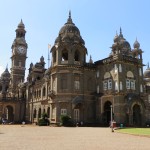

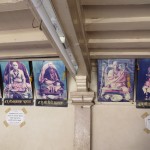
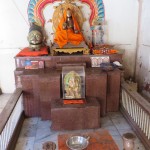
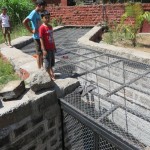
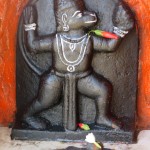
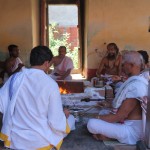
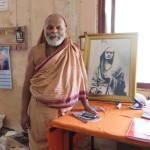
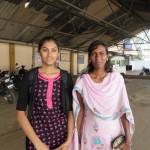
 Copyright © 2024
Copyright © 2024
Nicely narrated, interesting research work.
Thank you!
Hello,
Sorry, but I need to be blunt n critical here. A reporter needs to report what he/she sees, receives through senses and refrains from being judgemental personally. But what you write in this blog goes against this. You evaluate the story of Karvirpithadeesh, already with a suspicious mind, and going into a judgemental position equate it with writings of somebody else such as Swami Rama. This so called research that you site is also based on secondary evidance that cannot be corraborated.
Now a bit of information as to how I landed on this page. My information gathering efforts were on finding more information on samadhi place of Adi Shankaracharya. Till my personal visit yesterday to Kanchi Mutt and paying my obedience to Brindavan of Adi Shankara (samadhi) and reading that there are many views on His final resting place . I was under the impression that He finished his avatar in Himalaya. Since one of the possibilities listed is Karvirpitha, i.e. Kolhapur that you visited for your research work, it came to my notice.
It would be interesting to understand more on this work of yours. And let me say this, my outlook would be as open as it is humanly possible, free of any suspision.
Hello Shridhar,
I have done mountains of research on Swami Rama and did, indeed, come to Karvirpith with an open mind. However, I have found documents, including a judgment in a lawsuit over who was Shankaracharya, that show the man who appointed Swami Rama as his successor was not Shankaracharya at Karvirpith after his removal by Shahu 30 years before Swami Rama claimed the post. This is too lengthy to explain in a reply, but there is even more evidence that Swami Rama was never there, which I uncovered after I first wrote this post.
I have also read a number of accounts that say Karvirpitham was one of the possible resting places of Adi Shankaracharya, but if you visit, the devotees will not make that claim. I wish you the best in your efforts to find the location of his mahasamadhi.
You people have reduced the Great Holiest of the Holy Adi Guru Shankaracharaya to only a historical figure but not a eternal living truth which HE expounded all through and will do so for all time to earnest seekers.
It would be wise & more beneficial to try to study, imbibe and practice a fraction of His Eternal teachings rather than waste precious life energy and time, in pursuing historical data from which nothing much can be accrued.
If you you wish to really learn more, then go the sacred places here the Adi Guru Shankaracharya has lived, installed deities for worship and come back enriched.
Good Luck.
I do agree with Sridhar in the question of role of a journalist. A journalist can’t be judegemental and instead of writing impartially, he/she can’t try to lead an article towards a certain predefined conclusion. Katharine, on the other hand always starts her report, starting with a certain conclusion. (Yes, this is not the first time I see this.) In fact it is her report, that makes me hopeless about any possibility of the west ever to be able to discover the wealth in the east. However, let me write a little bit about my opinion on this article. It should be noted idea of this report is not Katharine’s own. It was taken from one of Swami Jnanesvara Bharati’s article.
First of all, it should be noted that a research on religious or philosophical persons or events or questions should be done only by people who has a profound knowledge in religions or philosophy. This is as true as for any other field of science, arts or literature. You wouldn’t see any random person in the east, venturing to write a successful article in spiritual questions. Secondly, in Indian philosophy, statements made by the rishis or the sages is considered to be absolutely complete, true and beyond doubt. That is how the entire philosophy of Vedas, Ramayana, Vashishtha Ramayana, Gita (please note that googling is enough to know the names, but not at all enough to realize, understand or even to get a feel of the profound philosophy of those texts.) came into existence. Ordinary people like Katharine and me can’t understand/realize them. Those philosophies are to be followed by ordinary people, initially because great sages have said so. Gradually after following the sages for years, decades, lifetimes, ordinary people begin to realize, “Yes, sages were correct”. That’s the path. With this being the case, Katharine didn’t give any importance to what Shankaracharya, (the highest person in the religious order in India) stated. She only wrote what she tried to establish. I have met Shankaracharya of Karveer Peetham. He doesn’t at all look like a lair to me (in fact, too far from that).
Now, let me come to the question of Swami Rama. I am extremely disappointed that so many people don’t try to understand one single thing from his teaching and instead they try to make adventurous “research” stories out of him. If you want to do research, work on the history of India; the architecture; or something else. If you subtract philosophy and yoga from Swami Rama, nothing much is really left, that worth so much of trouble taken by “a researcher”. He already left this world 20 years back! People who are hardly interested about Yoga or things related to that, shouldn’t make Yogis their hunting target, out of disbelief or professional requirement
Biased author ✍️ i hope the culture of this great civilization shower some grace on your rationality and set you free from your fickle mind
There is no way that the Shankaracharya of Karveer Peetham had been bought. These people are not some ordinary people. I am a resident of Kolhapur and have met Shankaracharya myself. He’s a gentle person and he maintains distance from everyone not because everyone else is of low caste or such but because many religious people in Hindu religion have this rule to not touch anyone. In Marathi we call this Sovale and it is not related to any caste as such.